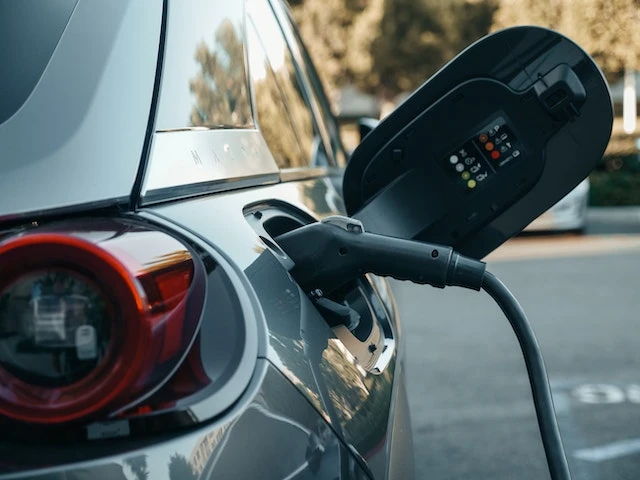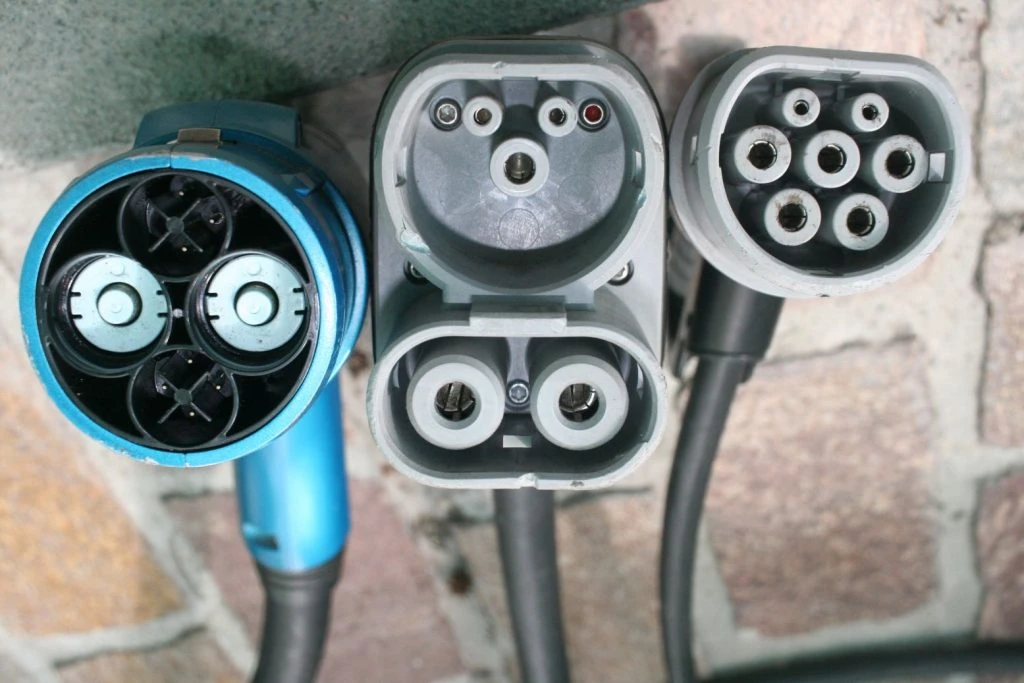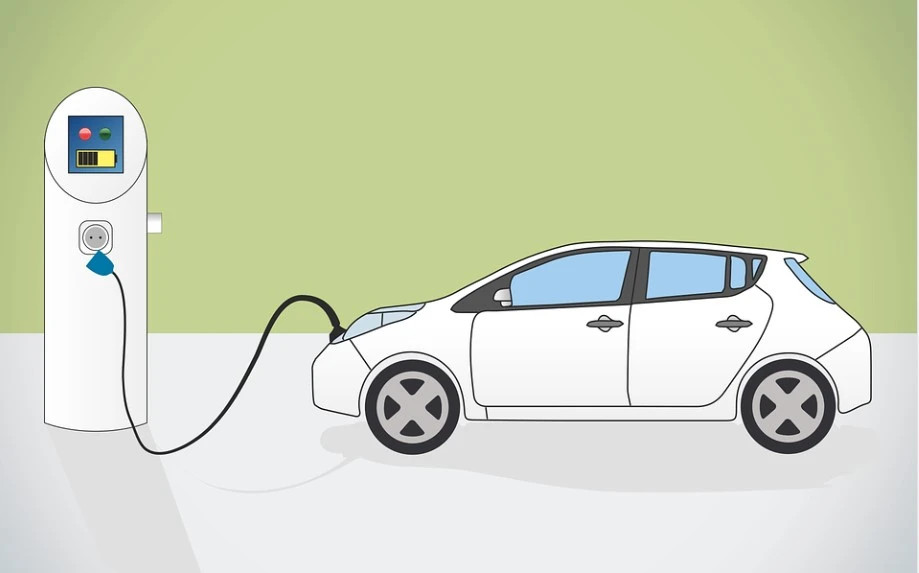Electric Vehicles (EVs)
One Thing They Don’t Tell You About EVs When The Rubber Meets The Road

The thing that a few of the proponents of EVs don’t often tell you about is about the tyres. They’ll tell you about how EVs produce less in the tailpipe emissions department and about how quiet they are and how much better the range is these days, but if you’re new to the world of electric vehicles, you may be in for a surprise the first time you have to change the tyres.
What they don’t tell you is that EVs need special tyres and fitting the sort of tyre that worked perfectly well for an ICE vehicle of the same size or even the same weight won’t work on an EV. The tyres on an EV have to cope with a number of the characteristics of electrical motors. Specifically, the tyres have to cope with the increased torque, the weight of the battery pack, the need for better energy efficiency and the need to reduce road noise.
Because electric motors behave differently from internal combustion engines, they have much higher torque figures. Torque, as we should remember from our high school physics class, is rotational force (as opposed to linear acceleration), so it bites in where the rubber hits the road – literally. The more torque, the more force is applied. Now, I like a good bit of torque in a motor, but tyres don’t like it as much, and too much can wear them out more quickly. This means that an EV has to have tougher tyres. They also have to have more grip to avoid slipping when accelerating, especially in wet or slippery conditions.
On top of that, the tyre has to handle the increased weight. You might not realise this, given that most EVs tend to be smaller urban vehicles (although this is changing). However, EVs weight more because of the battery pack. In fact, the battery pack can make up to quarter of the weight of an EV – and yes, this outweighs the bits that aren’t in an EV, such as the radiator, the fuel tank, the exhaust system and so forth. The battery pack also needs to be protected against mechanical damage (such damage is very bad news for the battery and is the leading cause of electrical car fires). This extra weight applies to hybrids as well as to purely electric vehicles (battery electric vehicles or BEVs). This means that the sidewalls on the tyres for EVs need to be stronger and heavier to carry the weight.
These two factors alone would be enough to indicate that putting regular tyres on an EV or hybrid vehicle is a bad idea, as the tyres would wear out more quickly – a lot more quickly! In fact, some have argued that if you are concerned about the environment, you should bear in mind that although EVs produce less from the tailpipe, they create more particulate matter from tyre wear. This is why several of the big-name tyre manufacturers have created special tyres for EVs.
If you’ve ever looked at the tyres made specifically for EVs, you may notice that they are taller and thinner. This is to decrease the rolling resistance. Going back to high school physics once more, something that’s heavier has more inertia and thus requires more force to get moving (think about how easy it is to kick a soccer ball rather than a medicine ball). Naturally, a tyre that’s stronger and more resistant to wear will be heavier, which would mean more inertia and thus rolling resistance. Making the tyre narrower will reduce the drag and thus the rolling resistance. This is important, because if you have waited half an hour to charge up your EV from a public charging station, you want that charge to last as long as possible before you have to do it again, so reducing the drag and the rolling resistance will be more energy efficient.
Lastly, there’s the noise issue. In an ICE vehicle, the rumble of the engine drowns out the road noise. In an EV, there is no rumble, so road noise is the only thing you can hear. Road noise isn’t quite as soothing as engine noise (most of the time), and that’s the only thing that you can hear in an EV, especially if you’ve switched off the sound system to save power and extend the battery range.
You can put tyres designed for other cars on EVs and hybrids, but three things need to be borne in mind. Firstly, you have to be sure to get something that can handle the extra weight. Secondly, a regular tyre will reduce the range of the battery. Thirdly, the tyre will wear out a lot more quickly, meaning that you won’t actually save anything by putting regular bog-standard tyres on an EV.
It’s best to put the proper tyres on an EV, as you will get better range and longer tyre life out of them. Admittedly, these tyres are more expensive (like performance tyres on a splashy sports car). They will also wear out more quickly, but not quite as quickly. This is something that tyre manufacturers such as Michelin are working on but you will have to factor in if when deciding if an EV is right for you and your budget. Despite being built tougher, these tyres still need to be maintained correctly – checking the pressure and rotating them regularly.
As with all things, the issue of battery weight and tyre wear are things that researchers are looking into and trying to improve, so we can look for things to get better (and hopefully cheaper) as time passes.
Extending The Life Of EV Batteries

One of the big questions that a lot of people have about making the shift from ICE (internal combustion engine) vehicles to EVs of any sort is the issue of battery life. In this context, battery life doesn’t refer to how many kilometres the batteries will take you (this is technically known as battery range) but the actual lifespan of the battery unit itself. If you’ve had any experience with any kind of rechargeable battery – which most of us have had – then you’ll know that even though you can recharge a battery a certain number of times, you can’t do it forever and eventually the battery will die, never to be recharged again.
Having said that, the lifespan of EV batteries is pretty good. In fact, the manufacturers claim that batteries can last for about 10–12 years, which is longer than the average lifespan of a whole car in some countries (although those who like second-hand cars or who are into classic cars may raise an eyebrow at this statistic). They’ve also got warranties to ensure that they last for a certain amount of time.
However, people researching rechargeable batteries don’t tend to measure the lifespan of batteries in terms of time (partly because no scientist in a rapidly developing field wants to spend 10 years running an experiment). Instead, they measure the lifespan of a rechargeable battery in charge–discharge cycles. To understand why they do this, we need to understand a bit about the science of a rechargeable battery. Don’t panic – I won’t get into too much detail, partly because I don’t have a PhD in it and can’t wrap my head fully around some of the minute details.
In any battery, an electrical current is generated when ions (particle with an electrical charge) move from the negatively charged anode through an electrolyte to the positively charged cathode. This keeps going until everything balances out and the electrochemical reaction stops. You can do this yourself with a copper coin (if you can find one these days), a zinc-coated nail and a lemon. Attach a wire to the coin and the nail, maybe connecting fairy lights in the middle, stick them in a lemon and watch the lights glow. However, in a rechargeable battery, this processed can be reversed, shuttling those ions back to the anode again.
In a rechargeable battery, every time the reaction comes to an end, i.e., complete discharge, that’s considered to be a full cycle. In the lab, to test a battery’s lifespan, researchers charge and drain and charge and drain and… until the material in the anode and/or cathode starts to deteriorate, which all things do over time. They also measure capacity decay. Over time, any rechargeable battery will lose the amount of charge it can store. Again, this is related to the number of charge–discharge cycles.

So what does that mean for EV batteries? Although the manufacturers measure lifespan in years, this figure is based the ideal battery user. If you charge your battery the right way and use it in the right way, then you’ll get the maximum lifespan from your EV’s battery pack. However, if you don’t, you’ll shorten the lifespan of the battery.
You can imagine the number of charge–discharge cycles in a battery as kind of like lives in a computer game. You’ve got a lot of them, but every time, you get those hit points down to zero and have to “respawn”, you’ve used up another life. However, unlike a computer game character’s life, hitting either extreme (full charge as well as full discharge) will shorten the lifespan because it puts stress on the battery – kind of like keeping a bow fully strung and at full draw most of the time, which, as any archer will tell you, isn’t good for the bow.
This means that ideally, you should avoid hitting these extremes. This means that exhausting your battery’s charge completely is a bad idea. However, so is topping it up to 100% all the time.
At this point, those of you who are familiar with rechargeable NiCad batteries will be scratching your heads because you’ve heard of “battery memory”. NiCad rechargeables (these are the sort that you buy to put in things that come with the label Batteries Not Included) do have a “memory”, meaning that if you are in the habit of recharging the batteries when they hit 10% charge, they’ll start acting as though 10% is the new zero. However, lithium ion batteries don’t have a battery memory effect, meaning that you won’t reduce their charging capacity if you top up the battery’s charge when it dips below a certain level.
In fact, what manufacturers recommend for preserving the life of a battery sounds rather like the principles used for managing blood sugar in Type 1 (insulin-dependent) diabetes. You don’t want things to drop too low, but you don’t want them to go too high, either. The ideal is to keep batteries between 80% charge (which is why the charging times given by EV manufacturers are usually the time taken to reach 80% charge) and either 20% or 40% charge. On top of that, rapid charges and rapid discharges also stress the battery.
In practice, this means the following:
- Don’t recharge your EV to overnight every night. However, you need to balance this against what you know about how and where you’ll be driving and where the accessible chargers are.
- Don’t let the battery drain too quickly. This means that you have to be very careful when it comes to things like towing, going uphill and running too many things that require electricity at once. In other words, if it’s a freezing cold rainy night when having the lights, wipers and heaters going is a must, then you have to decide if it’s really worth it to use the sound system as well.
- Although DC rapid charging is convenient, it does stress the battery, so reserve this for when you absolutely have to. DC rapid charging isn’t catastrophic for your EV’s battery and you can do it now and then without putting a serious dent in your lifespan, but it does put a bit more stress on it than slower AC charging, so don’t do it all the time.
- Extreme temperatures make the lithium in the batteries do funny things. Getting too hot is the most dramatic, but most modern battery packs (thank goodness!) have cooling systems to ensure that they don’t overheat (these systems use the battery’s own charge to operate). Getting too cold is also a problem, as the electrochemical reaction producing the charge is slowed right down, which translates to reduced range and slower charging times. Some battery packs, notably in Tesla vehicles, have systems that keep them at the ideal temperature – though at the cost of range. However, these can drain the battery more quickly, which shortens the lifespan.
- If your EV has to go into long-term storage, keep it on a trickle charger or a smart charger to ensure that it stays about half charged.
Plugging In A Plug-In
Like anything else with batteries, an EV of the PHEV or BEV type (i.e., plug-in hybrid EVs and full battery EVs), will need to be plugged in and charged. In my previous article, I talked about the different types of charger and the different charging speeds.
However, there’s more to know if you’re new to the world of EVs and plugging in instead of filling up. This is because different vehicles have different types of connectors or plugs. Obviously, you can only plug into something that has a compatible connector. This may sound confusing if you’re used to filling up a petrol or diesel tank, where one size fits all. However, if you’re used to negotiating all those different cables and chargers for Android phones, Apple phones, USB chargers and HDMI cables, then you will easily get the hang of the different connector types used in EVs.
There are a few basic types: Type 1, Type 2, CCS 2 and CHAdeMO. All of these have different pin patterns, meaning that you can’t plug the wrong one in by mistake (kind of makes you wish they had done something similar with ICE vehicles so that nobody put petrol in a diesel tank or vice versa).

Type 1 AC connectors are also known as J1772 or SAE J1772 connectors, or just J plugs. They are mostly found on older EVs and PHEVs. The connector has five pins that look a bit like a smiley face.
Type 2 AC connectors are also called Mennekes connectors after the German company that invented them. They look a bit like a mutant hair dryer. They are the standard connector in Australia and Europe found on most EVs sold in the country today. Type 2 Mennekes connectors is often found in combination with the CCS connector – if you look carefully, you can see that the “surprised face” circles in the top part of the CCS connector combo is hidden in the seven circles of the Mennekes connector.
Tesla connectors are based on the Type 2 connector to allow you to use it to charge a Tesla at home via AC charging but has a special lock-out design for the DC chargers, meaning that only Teslas can charge up from the dedicated Tesla DC ultrafast charging systems.
CCS stands for combined charging system. The bottom half of a CCS connector allows for fast DC charging from public outlets, while the top half is for AC charging. Although it is possible to find EV models that have Type 1 up the top and the DC connector down the bottom, these are very rare in the Australian market. Most EVs in Australia that have these CCS connectors (technically, these are CCS 2 connectors) will have a Type 2 pin arrangement up the top.
CHAdeMO connectors get their name from the French phrase “Charge de Move” (“movement using charge”). Rumour also has it that it was derived from the Japanese phrase “o cha demo ikaga desuka”, which means “How about a cup of tea?”, as the idea was that charging with a CHAdeMO charger would take as long as having a cup of tea. I don’t know how long it takes you to have a cup of tea, but I don’t think they’re referring to the full Japanese tea ceremony here, which can take up to four hours. However, the CHAdeMO connector is used for DC fast charging, which can take about half an hour. These connectors are mostly found on earlier Japanese models such as the Nissan Leaf.
When you buy an EV, it will probably come with at least one cable so you can plug it in and get started. However, it’s often a good idea to have a range of different cables with different connectors. For example, you can get a cable that can plug into a Type 1 outlet even though you’ve got a Type 2 input in your EV, or one with Type 2 at both ends for public charging stations where BYO cable is the expected way to proceed. If you’re anything like me when it comes to cables and remembering what goes in where, it might be a good idea to attach a label or colour-code the different cables if you have several, and to store them in separate bags.
Ready, Set, Charge!

If you are one of the many who has opted for an EV for whatever reason, then the time will come when you have to charge it up – just like you have to charge up your phone, e-reader or laptop. However, charging an EV is not quite the same as filling up a petrol or diesel tank, and if you’ve never done it before, there are a few things that you’ll have to get used to, especially regarding the different charging speeds.
Deep breath required here. There will be maths.
With all types of charging, the exact amount of time you’ll need to charge the battery will depend on the voltage of the outlet and the battery capacity. The formula for working it out is:
E = P × t
Makes you feel a bit like Einstein, saying that. E is energy, P is power and t is time. Rearrange this and you get t = E/P or, in plain language:
Your EV’s battery capacity (in kWh) ÷ power output of the charger (in kW) = hours of charging time

This equation, however, mainly applies to charging to 80% rather than 100% (and this is the charge time figure that you’ll see in specs and stats from the manufacturers of EVs). This is because charging isn’t a linear process and it slows down as the battery gets closer to full charge. It’s a mechanism that helps prevent overheating. If you want to charge to 100%, bear in mind that doing so will take a bit longer.
The thing that most people are concerned about is the charging speed. In fact, the charging times are one factor that can put people off purchasing an EV, especially an all-electric BEV or a PHEV. Here in Australia, we have reasonably sensible names for the different charging speeds, unlike in other countries, where you have to ask a few questions to be sure what you’re talking about during a discussion of fast charging – you’ll hear some people talk about fast charging as something different from rapid charging (I feel sorry for those who don’t speak English as their first language because – well, you try explaining the difference between fast and rapid!). Here, we keep things straightforward, calling the two most common charging speeds Level 1 and Level 2, with only the fastest type being called “DC fast charging”.
Level 1 charging is simplest type of top-up charging that you can do at home or anywhere else you can access a standard common or garden power socket. It seems very simple but the trouble is that this type of charging is very, very slow. Recharging a completely drained battery will take at least a whole day, as in a 24-hour day. It could even take 48 hours, which is fine if you’ve got the whole weekend to recharge your car’s batteries as well as your own and don’t have to go anywhere. On the other hand, if you find yourself at a relative’s place in the country and not enough charge to get you home, you can just plug in and recharge enough to get you home again, or at least to the nearest public charging station (it would be nice if you compensate your relative for the power you’ve used, same as if they let you have a jerrycan of petrol if you’d run out). You may hear this referred to as trickle charging.
Level 2 charging is the sort of charging you do with one of those wall boxes in your home, and Level 2 chargers are what you’ll find in typical public chargers of the kind you’ll see at the supermarket, mall or gym and, if you’re really lucky, at work. Typically, you get around 7.2 km of mileage for every 10 minutes of charging with a 7.2 kW unit, or 22 km of mileage for every 10 minutes with 22 kW charging. (Is anybody else getting flashbacks to the sorts of word problems we had to solve at school?)
However, remember that these mileage figures are approximate and are under ideal conditions. If you have a heavy load, if you have to go into a headwind, or if you want to run the lights or heaters or play music, you’ll reduce the range.
Commercial outlets will often provide chargers not just for their customers’ convenience (although this is certainly part of their motivation) but also as a marketing ploy. If you need to ensure that you’ve got enough charge in your battery to get you home again after work and shopping, then you may need a couple of hours to charge the battery to the right level. However, it may take you only one hour to do your workout at the gym or to pick up your groceries, leaving you with time to kill. Chances are that you’ll spend time in the gym cafeteria or that you’ll spend a bit longer in the supermarket browsing the shelves to fill in the time and will thus spend more money, which is what the commercial outlets are hoping for. Just be aware of this little ploy and budget for it, develop some iron self-discipline and a healthy bit of patience, or take a book. Just don’t make the mistake of sitting in your car doing things on your phone or laptop with your device plugged into the charger in the car!
Speaking of budgets, a home wallbox will have to be bought separately when you buy a new EV. It’s a good idea to buy one, as otherwise you’ll be relying on super-slow trickle charging or public charging stations to top up the battery. It will also need to be installed by a professional electrician, like your oven or hot water cylinder and for the same reasons. You’ll also have to factor the cost of labour in as well. This is something to keep in mind.
DC fast charging (aka rapid and ultra-rapid charging) uses DC electricity, whereas Levels 1 and 2 use AC electricity. The best known DC chargers are the Tesla superchargers even though, ironically, the original Nikola Tesla promoted and popularized the use of AC electricity. How fast this type of charging will be will depend on the battery, but charging can be done in less than an hour, depending on the kW rating and the type of car. Some EVs charge faster than others. It has to be remembered that not all EVs are compatible with DC fast charging; this is often the case with PHEVs. This is something to check and think about when you buy an EV.
It’s also important to understand the different types of connectors or plugs, but that’s another story for another time.